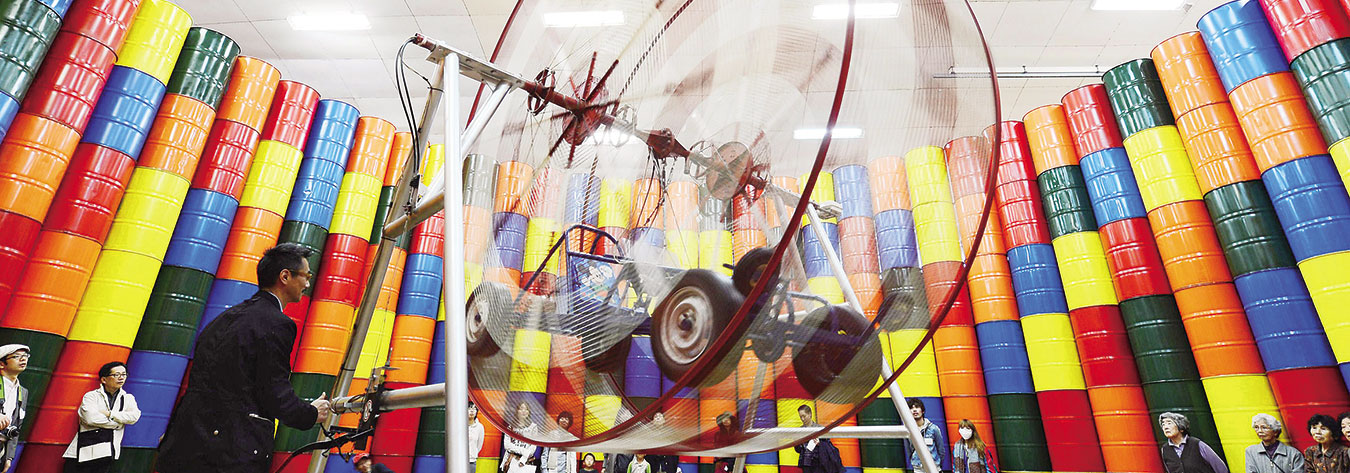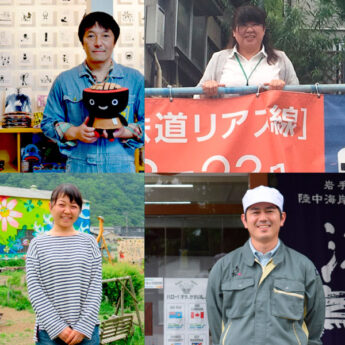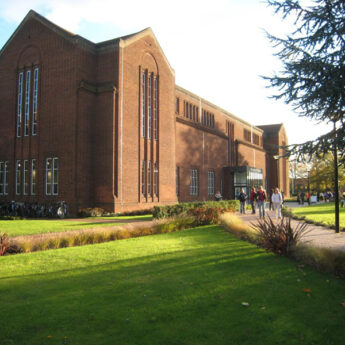Chairman helps island through art project
- Support will enable project to be self-sustaining
- Derelict facilities are being used as art venues
- Local people are pleased to welcome tourists
Koji Nakao has taken his abiding fascination with contemporary art and given it a place to flourish. That makes him a distinctly atypical chairman of a Japanese corporation.
In the waters of the Inland Sea south of Hiroshima Prefecture, Momoshima has a coastline of just 11km and a population of 550. And that figure was falling each year as young people moved to the mainland in search of better work opportunities.
But in 2012, Yukinori Yanagi and a group of like-minded artists banded together to give the island a new purpose, taking a number of derelict facilities on the island—including the former premises of the junior high school and cinema—and turning them into venues for a new community initiative.
Art Base Momoshima has gone from strength to strength in the intervening years, with artists from the United States, Austria, Switzerland and Germany invited to take part in artist-in-residence programmes that are held for four weeks, twice a year.
Funding for the project has been a constant concern, however, which is where Nakao—chairman of medical devices manufacturer Terumo Corporation—brings his particular skills to the table.
“The local people did not really comprehend what modern art is”, Nakao told those attending a British Chamber of Commerce in Japan luncheon at the ANA InterContinental Tokyo on 15 April. “But they are pleased and excited that there is a lot more traffic to the island”.
With open arms, Momoshima’s residents have welcomed the artists, who, in turn, have become part of the community. In time, Nakao hopes the art project will help the local economy and attract yet more people, both as visitors and residents.
The island incorporates works by Yukinori Yanagi, who studied at Yale University and is famous for a series of works in which ants are encouraged to crawl across images—of bank notes or national flags for example—made in sand, to break down the design. Works by Yanagi are on display worldwide, including at the Tate Modern in London.
Other pieces on display at Art Base include pieces by internationally renowned Japanese artists Noriyuki Haraguchi and Takashi Murakami—one of whose works, titled “My Lonesome Cowboy” sold at auction for the equivalent of £8.7mn in 2008. Pieces created by the late Bruce Conner, who won widespread acclaim for art pieces that utilise images of atomic explosions, are also on display.
Dotted around the island are further examples of the artists’ work: the tailfin of a Phantom fighter jet from the Vietnam war is an art installation; the interior of the art centre’s café has a view of the island from out at sea; and grime on the sea wall has been scrubbed off to create another work of art.
“Good contemporary art should be thought-provoking”, said Nakao. “Contemporary art should puzzle you and please you at the same time”.
As a collector and lover of modern art, Nakao has taken it upon himself to provide support, including in the shape of financial assistance, to enable the entire project to be self-sustaining.
Asked about the state of contemporary art in Japan today, Nakao says that little is known of the genre, particularly outside the country.
“People from abroad know about sushi and kabuki when they think about traditional Japan, and about manga as modern art, but there is so much more beyond just traditional Japan or ‘Cool Japan’”, he said.







